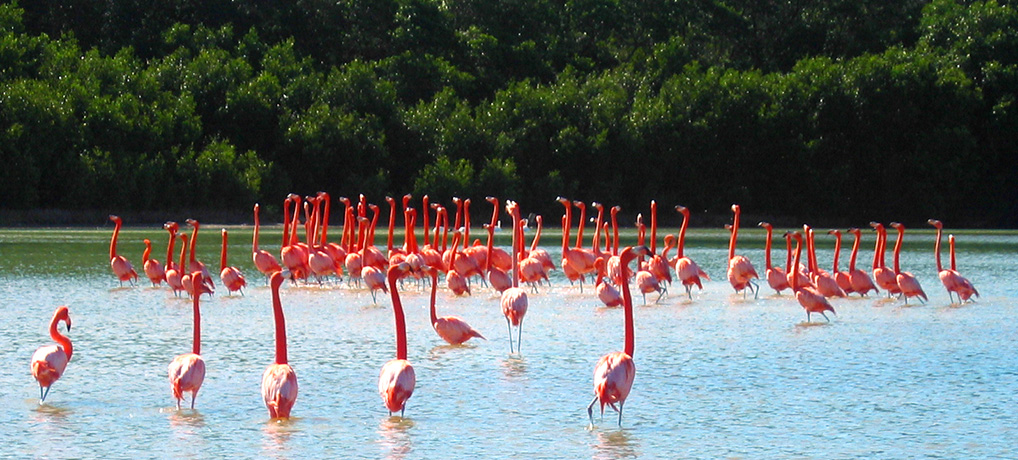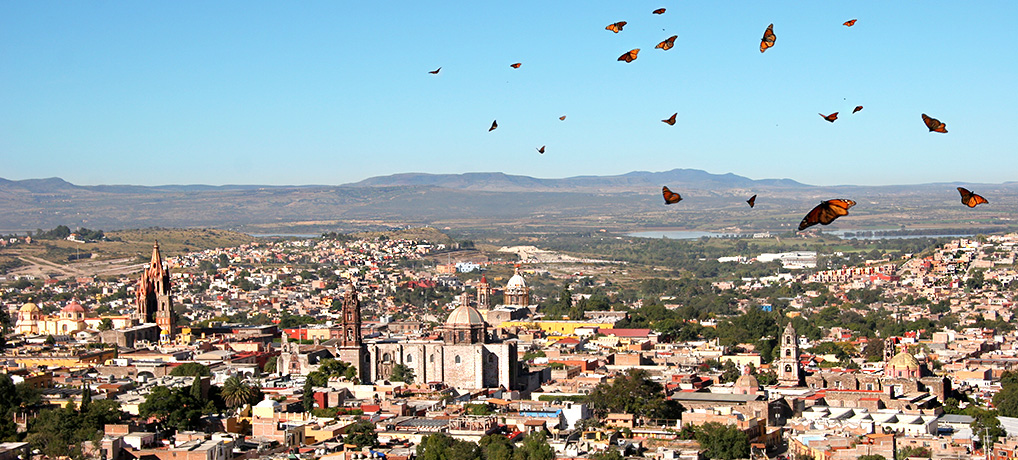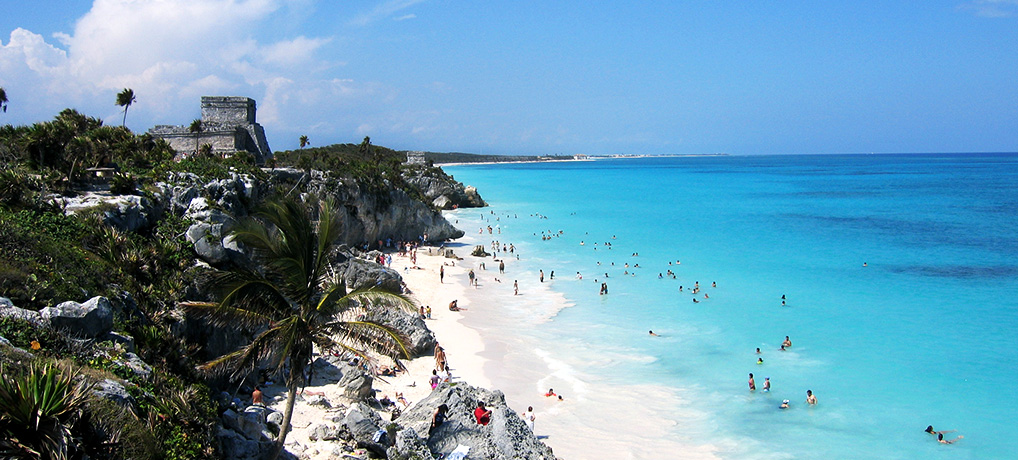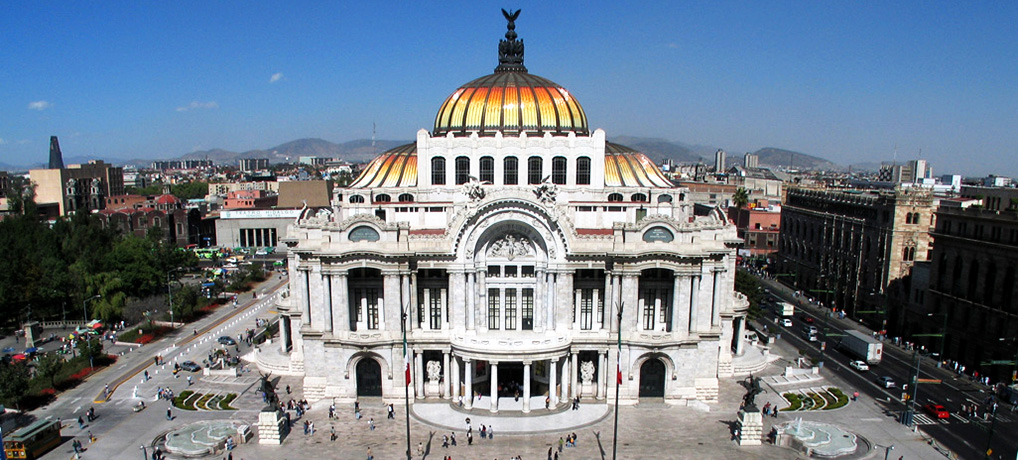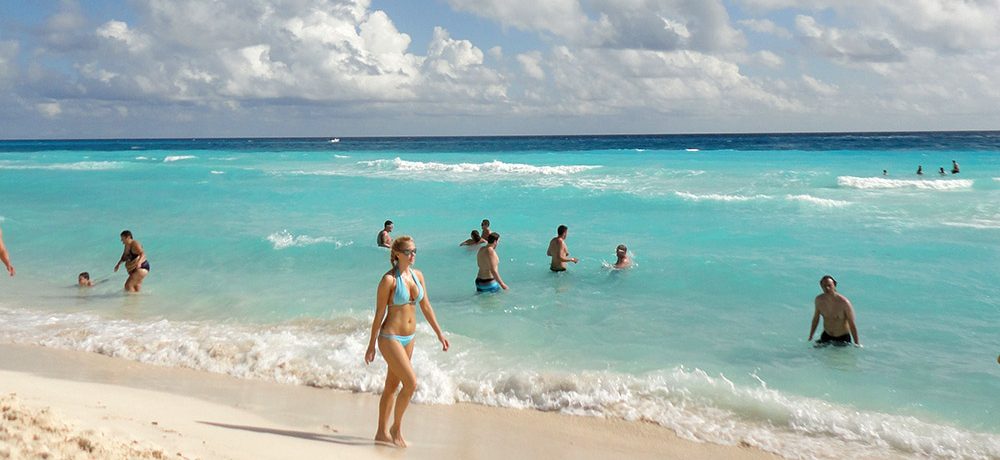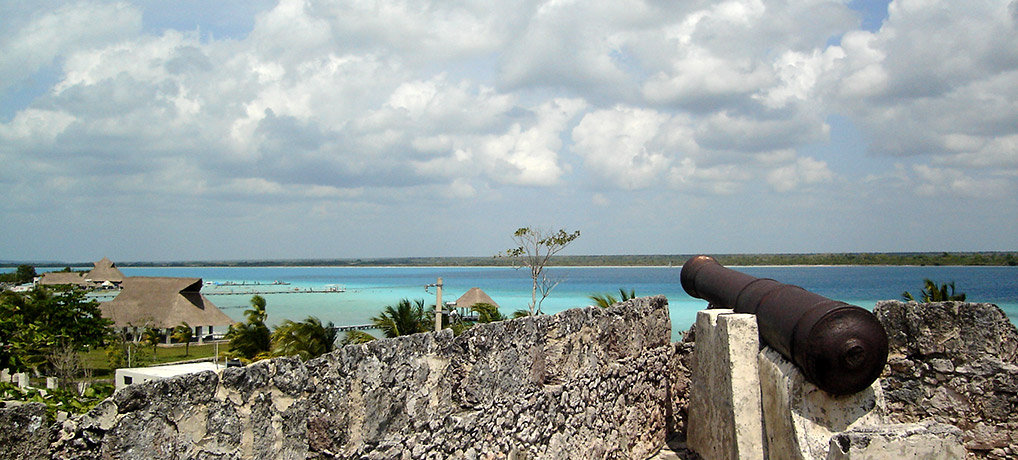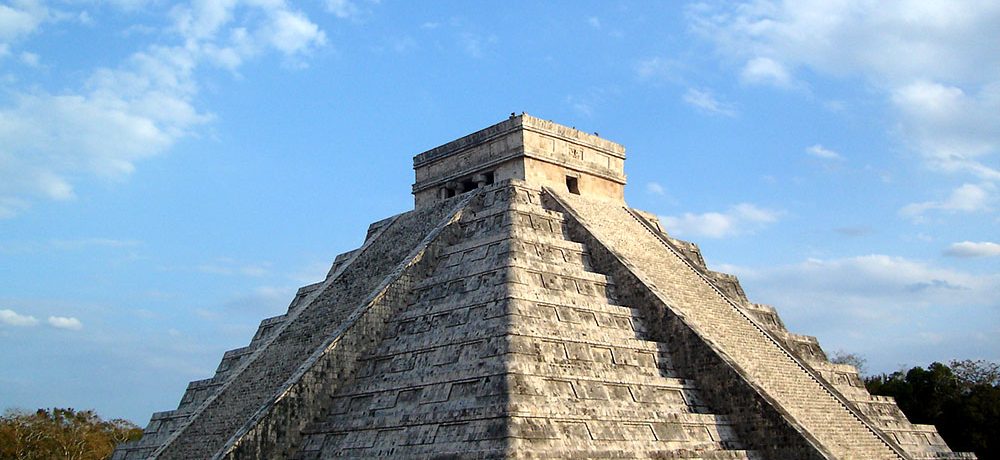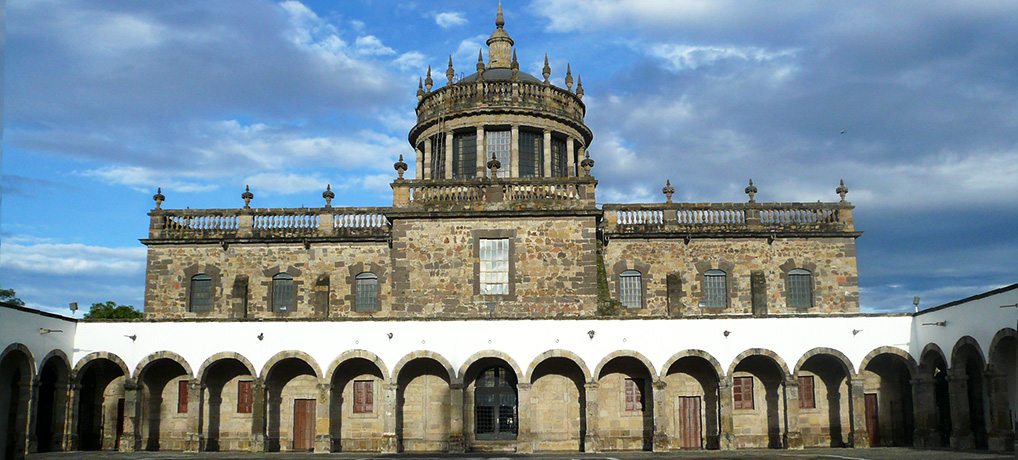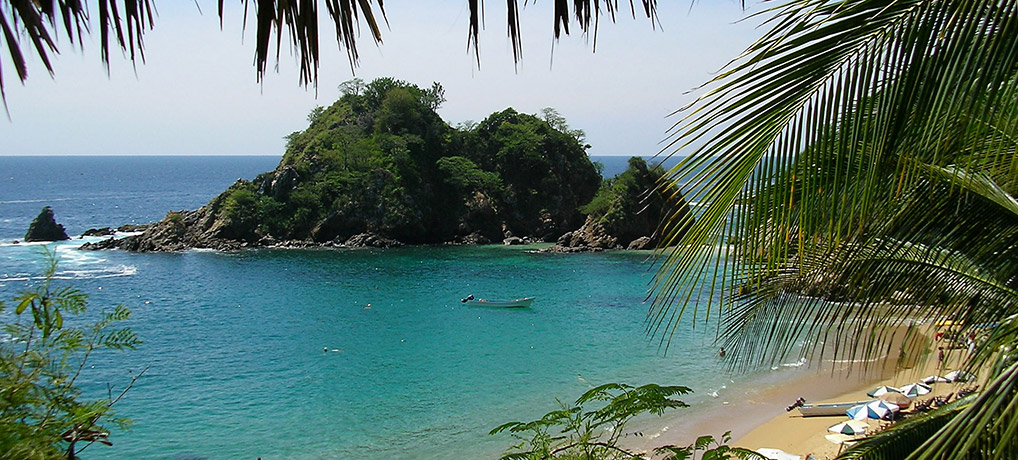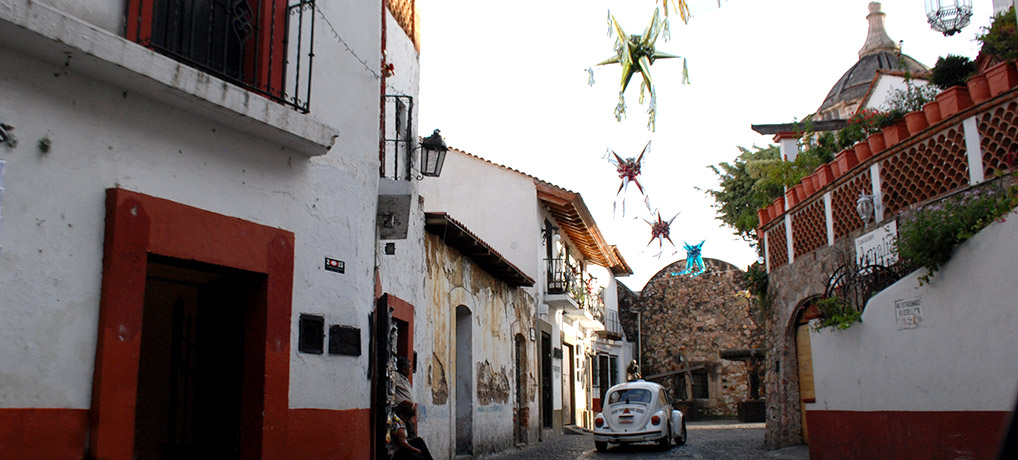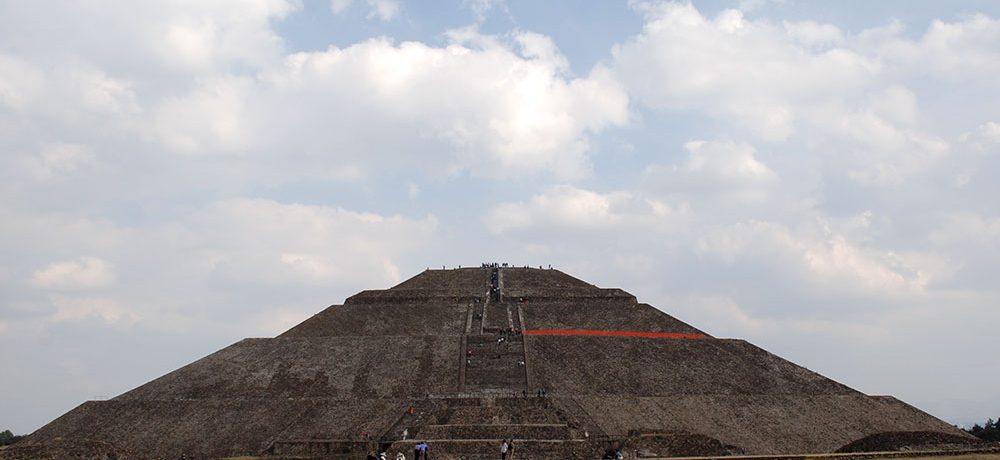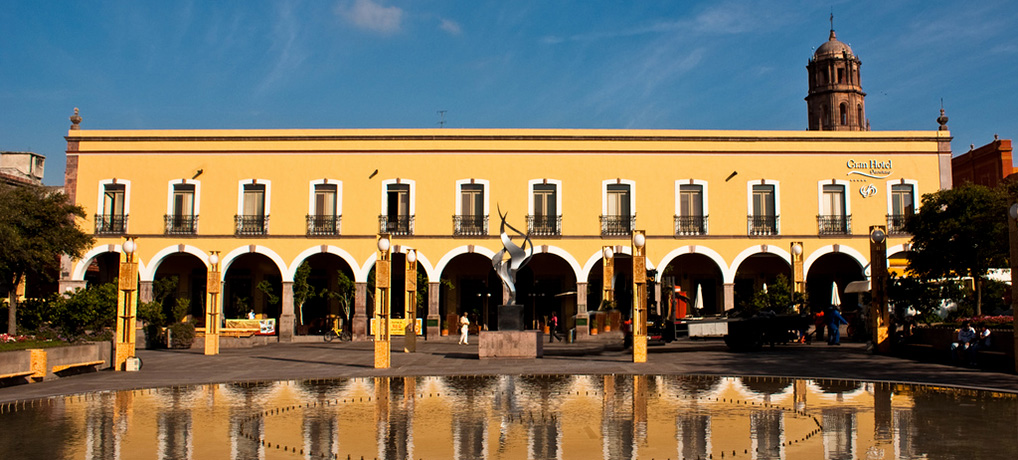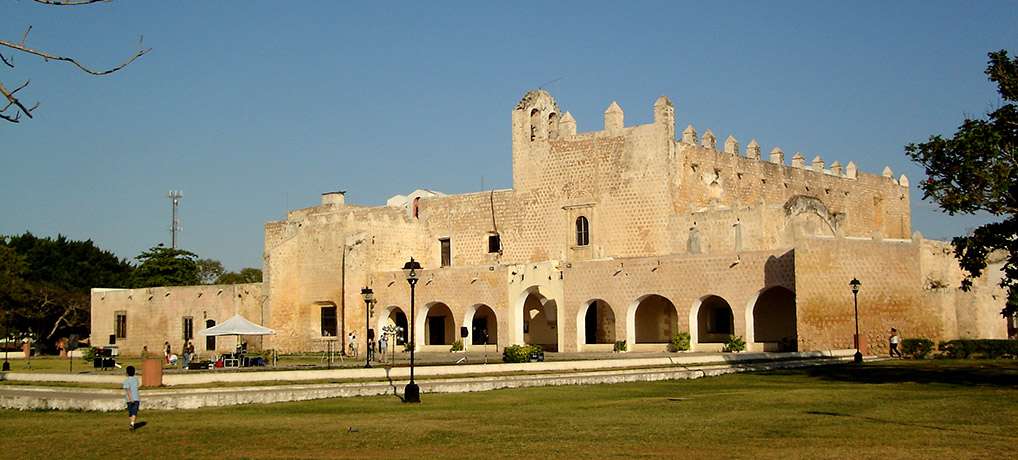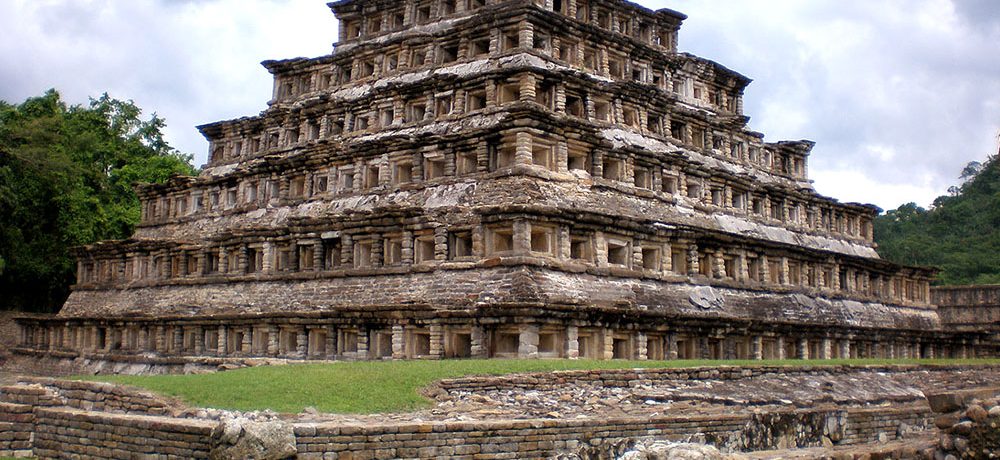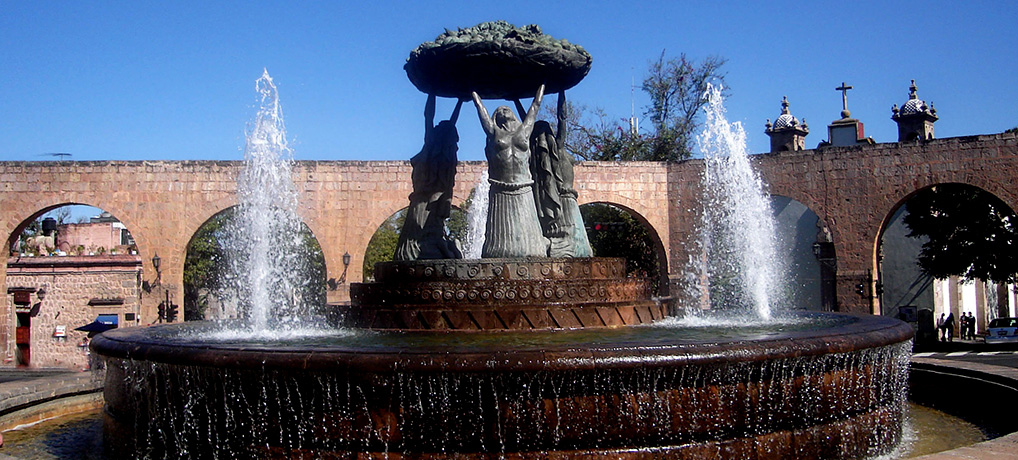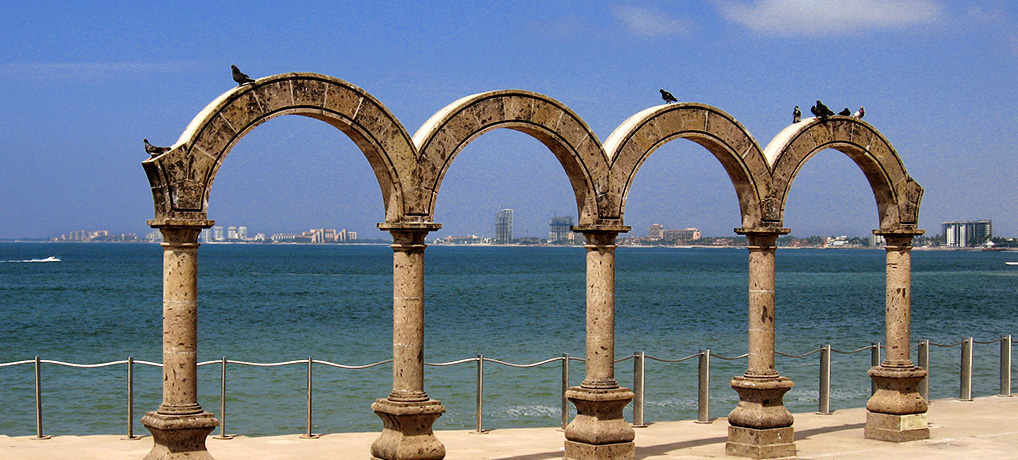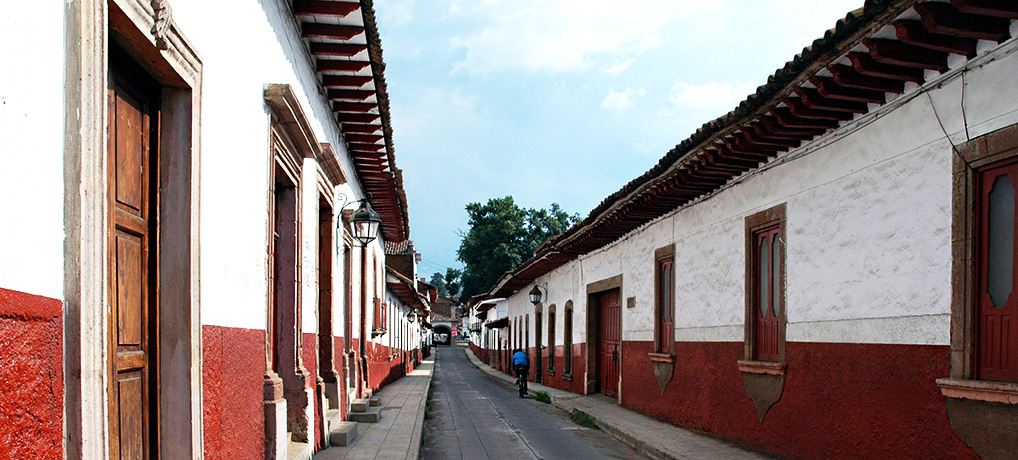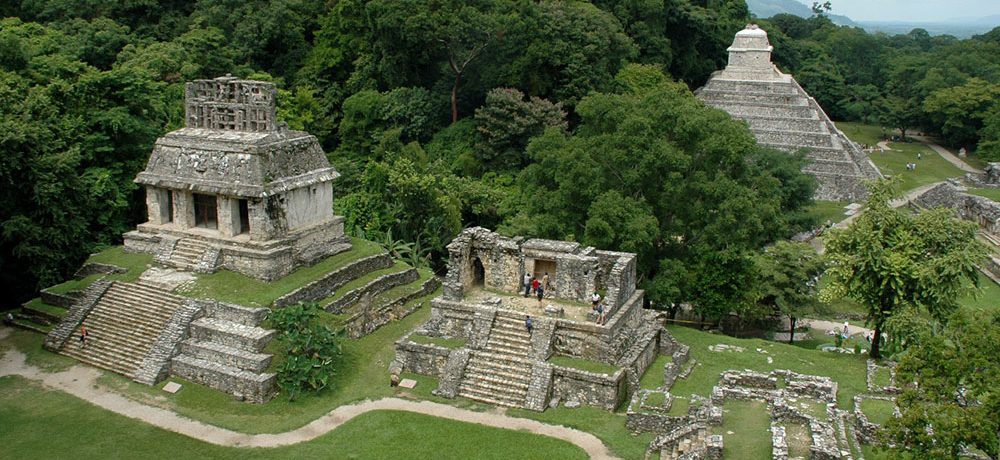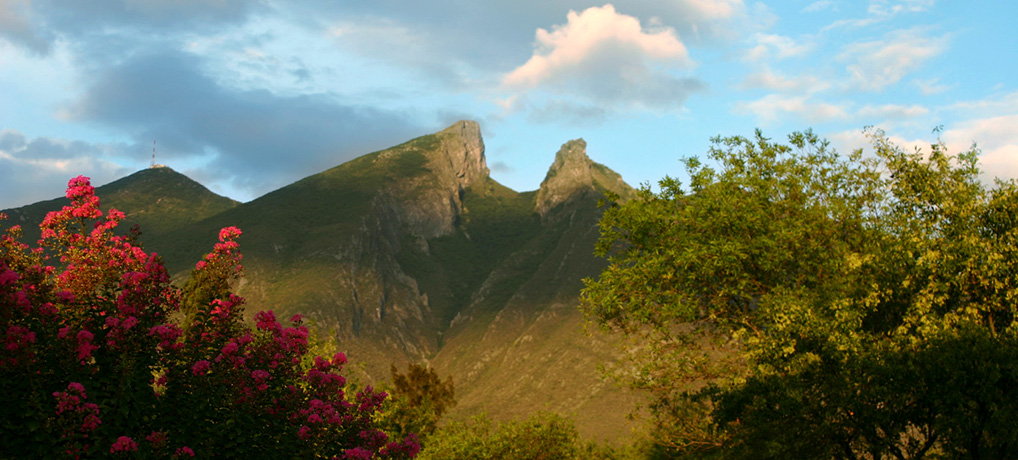Mexico is a country full of color and extraordinary landscapes, culture and traditions that in its beaches and cities as well as in its archaeological sites and magic towns, invites tourists and travelers to discover it, to live its attractions and enjoy its nature and customs , to feel the warmth of its people and the delight of its gastronomy, to know about its history and folklore, to see its contrasts between modernity and ancient times, to live the magic of its corners and to enjoy all its charms.
TourisMexico is an effort that proposes to offer structured information of the main tourist destinations in Mexico, its events as well as its attractions and gastronomy. In which a combination of experiences of travelers and tourists, nourish and give dynamism to the information of local and national tourism institutions, tourist guides and travel agencies, bloggers and local experts. To offer a virtual tool of what to do and where to go, calendar of festivals and events, practical information and recommendations on the beautiful tourist destinations of this mosaic of culture and tradition called Mexico.
Emergecy Numbers
Know which consulate is closest to your destination and have the citizen assistance phone number on hand. There are some things they can help with and other things they cannot, but they may be able to advise you as to how best to handle your emergency. Find the embassy or consulate nearest you on our list of U.S. consulates in Mexico and Canadian consulates in Mexico.
Dial 911 for emergency assistance.
This service is available 24 hours a day, 365 days a year, and replaces the previous system that required users to dial different numbers to access different types of emergency service. 911 may be called free of charge from landlines and cellphones.
Embacies
Emergency numbers for the U.S. and Canadian embassies in Mexico:
U.S. Embassy in Mexico:
In Mexico City, dial 52-50-80-2000.
For elsewhere in Mexico, dial the area code first, so you would dial 01-55-5080-2000.
From the United States, dial 011-52-55-5080-2000.
During business hours, select extension 4440 to reach American Citizens Services. Outside of business hours, press "0" to speak to an operator and ask to be connected to the officer on duty.
Canadian Embassy in Mexico:
In Mexico, dial 52-55-5724-7900 in the greater Mexico City area.
For elsewhere in Mexico, 01-800-706-2900. (available 24 hours )
Canada embassies and Consulates in Mexico touristic Destinations
Health and Vaccination
Mexico offers excellent (expensive) private health care facilities, clinics and hospitals feature the latest modern facilities and are built to US-standards and Mexico’s social security system is called the Instituto Mexicano de Seguro Social, often abbreviated as just IMSS that is free at the point of delivery for Mexicans as well as foreign nationals with residency status who are in full-time employment by a company registered in the IMSS system.
A recent prestation is the Seguro Popular is a nation-wide healthcare program that is designed as a safety net to cover citizens who are not enrolled or otherwise covered by the IMSS. The service is intended to ensure that all Mexicans, regardless of their socio-economic status and Mexico has too a wide range of insurance companies that, for a monthly premium, provide you with private health coverage.
Private insurance companies supply their own emergency contact numbers to policy holders and, depending on the insurer and the plan, some services will connect you to an English-speaking operator for assistance.
Vaccination
Be sure that your routine vaccines are up-to-date regardless of your Mexico travel destination.
Some of these vaccines include: measles-mumps-rubella (MMR), diphtheria, tetanus, pertussis, polio, varicella (chickenpox), influenza and others.
Vaccines to Consider
You may be at risk for these vaccine-preventable diseases while travelling to Mexico.
Talk to your travel health provider about which ones are right for you.
Hepatitis A
Hepatitis B
Influenza
Measles
Rabies
Yellow Fever - Country Entry Requirements
Currency
the Mexican Peso is the national currency of Mexico and Bank of Mexico is the nation's central bank, issuing paper and coin money which is legal tender.
US dollars, Canadian dollars, British pounds, euros, yen and major currencies can be easy exchange in many banks Mexican banks and exchange houses.
Mexico City’s airport is one of best places to exchange your money offering a very competitive and attractive exchange rates. Usually banks and exchange houses do not charge commissions to exchange currency they make money thought the difference between the rate and variation of your currency and the Mexican pesos. In tourist you can find too several options and check who is offering the best rate.
By Plane:
Main Mexican airports are daily available for flights coming from the United States, Canada, Europe and South America, the main carriers include Aeromexico, Mexicana, Interjet, Volaris, American Airlines, Air Canada, West Jet, United, Continental, Delta and Iberia, Air France flying primarily from Dallas, Houston, Miami, Chicago, New York and Los Angeles, Vancouver and Toronto, Montreal, Paris, Madrid, Buenos Aires and Bogotá into Mexico Most flights arrive into Mexico City, and some flights from USA and Canada are direct to: Guadalajara, Monterrey, Cancun, Puerto Vallarta, Los Cabos, Leon, Acapulco and Morelia. US, Canada and international travel wholesalers make available complete travel packages in high seasons.Arrival at the Main Airports in Mexico
At your arrival to any Mexican airport you mandatory needs to pass through immigration and clear customs, and then to arrive to your hotel or accommodation, you the next options depends the city or destination. Airport Transfers Usually you have this option for staying at a major resort and main touristic destinations in Mexico, you may have arranged to be picked up at the airport by the hotel. Vans "Suburban" Cancun, Puerto Vallarta, Huatulco, Acapulco, Los Cabos, Ixtapa Zihuatanejo and others main touristic destinations at airport you can find the Van option to ride to your hotel. The ride is comfortable a little longer but you pay a fraction of a taxi price. Authorized Taxis Authorized taxi “Taxi Autorizado” usually two companies; charge identical (high) prices depending on a zone and destination. This option is surprisingly affordable, especially compared to Europe, Canada and USA, only check some tips to make taxis effectively and safely.By Bus:
Modern air conditioned buses and very comfortable are available from Mexico City and other cities. Mexico’s national bus network is modern, comfortable and affordable to travel across Mexico touristic destinations. Mexico’s bus network offers the way to travel by bus efficiently in the highly developed, nation-wide network of bus routes in Mexico. Mexico City has four main bus stations, located at the four cardinal “compass points”: Southern bus station: Located at side of the "Taxqueña" metro station. Northern bus station: Located at side of the "100 Metros" metro station. Eastern bus station: "La TAPO". Located at side of the "San Lazaro" metro station. Western bus station: Located at side of the "Observatorio" metro station.Bus routes in Main Regions “Hub Cities” are:
Pacific North-West: The hub cities are Mazatlan and Los Mochis. Central Western Region: Toluca, Morelia, Patzcuaro as well as the north-western colonial cities of Aguascalientes and Leon. Guadalajara is also a hub for bus routes to the central Pacific Coast including Puerto Vallarta, Manzanillo and Ixtapa and Zihuatanejo. Southern Central: Oaxaca City, Tuxtla Gutierrez and San Cristobal de las Casas and the popular Pacific coastal resorts of Huatulco and Puerto Escondido. Yucatan Region: In the Yucatan Peninsula, the colonial city of Merida and Cancun are the two principal ‘hubs’ for bus routes in the region. Southern Gulf Coast: Campeche, Villahermosa and Tabasco. Buses from here also connect to Veracruz (north) and Merida (southeast). Central Gulf Coast: The port city of Veracruz and the capital city of the state of Veracruz—Xalapa— also connect to the colonial city of Puebla and travel north to Matamoros, on the border with the USA. North, North-East: Chihuahua City and Monterrey (Mexico’s third largest city). You can also get buses which travel to and from some principal US cities from Chihuahua and Monterrey. The Baja Peninsula: The main bus company is called Aguila, which runs services between Los Cabos, La Paz, and Todos Santos, as well as routes to Loreto.By Car:
Large and well-paved highways connect the major cities and touristic destination in Mexico in general with some exception of the remote zones, major roads are well-maintained and connect most any main place you’ll need to go. You'll find in the Min Cities and Airport the major car rental players like Hertz, Avis, Europcar, Budget, etc. as well as local companies, but navigating the country's notorious mandatory insurance can take some careful research because are easy to come by though expensive rent and the companies tack on huge fees and taxes to the offered price. Driving in Mexico depends a lot about the hour, the city or the zone. For example in vacations or holidays the major highways that connect the big cities specially Cuernavaca, Puebla, and Querétaro to get incredibly congested. However, once on the open road, Mexico offers beautiful landscapes a charming on road towns and good road infrastructure. Mexico’s toll roads you’ll pay depend on how far you travel along it, basically in parts, with payment booths set out along the highway at major towns or turnoff points. Charges vary, depending on the route and Tolls are best paid with cash; some booths are starting to accept credit and debit card Recommendations: Though some regions of Mexico have cartel violence and safety concerns, Cancun, Playa del Carmén and in General the Mayan Riviera and Yucatan Peninsula have a thriving tourism industry and works hard to preserve it. Likewise, just be prudent check your routes follow the laws and drive the speed limit, that can be enough to avoid any security problem.The variety of lodging in Mexico is wide ranging from from large all-inclusive beachfront resorts to budget hostels, from stylish boutique hotels to motels, you can find modern chain hotels, haciendas and charming rooms. Hotels from one to five stars.
Some of the major classifications are:
Mexico All-inclusive Resorts
Mexico’s all-inclusive resorts have diversified and expanded rapidly, improving their quality and adding many categories and price points.
Mexico Full-service Hotels
With the European plan, which means that the price includes accommodations but not food. European-plan hotels are located in beach resort destinations as well as major cities.
Mexico Boutique Hotels
Some of the most interesting and unique accommodations in Mexico are in the boutique hotel category. These hotels, which tend to be smaller than larger chain hotels, are often housed in interesting buildings — sometimes very historic, sometimes super modern — and they tend toward unique decor.
Mexico Bed and Breakfast Inns
In many cases, there is crossover between the boutique hotel and bed and breakfast categories. The basic definition of a bed and breakfast inn is a small hotel, usually independently owned, that includes breakfast and perhaps other meals and services with the price of accommodations.
Mexico Vacation Rentals
Renting a private home, apartment or condo can be a worthwhile option for travelers looking for additional space and a more authentic feeling of living in the destination. General sites like Airbnb, HomeAway and VRBO offer private homes for short- and long-term rentals in many popular cities in Mexico, and sometimes local tourism offices can help travelers get in touch with rental options.
Mexico Historic Haciendas
The wealth produced by henequen in the 19th century resulted in an array of sprawling estates across the Yucatan peninsula, centered around stately hacienda homes. Most of these properties no longer serve their original purpose, but many have been recast as elegant small hotels. They’re an ideal base for anyone looking to explore the ruins, cities and towns of Yucatan state.
Mexico Farmstays
Staying on a working farm can be an interesting way to connect with nature and stay active in a positive way while on vacation. Among the choices in Mexico is Rancho Sol y Mar, which describes itself as a “sustainability education center” and campground, located two hours south of Puerto Vallarta. Here you can camp in tents and learn about sustainable living during ranch tours, even learning how to milk goats, make cheese and maintain solar energy and water systems. Free time can be spent horseback riding, boating and visiting a nearby fishing village.
Mexico Hostels
These inexpensive accommodations are great options for travelers on very tight budgets. Hostels in Mexico can be found in picturesque beach areas like Cancun, Tulum, Mazatlan and Puerto Vallarta, as well as interior cities like Oaxaca, San Miguel de Allende and Mexico City.
Mexican Gastronomy
Mexican Cuisine is an art and its Gastronomy will be surprised by its colors, flavor, aromas and variety.
We owe Mexico numerous foods from pre-Hispanic cultures like corn "maíz", cacao, avocado, vanilla, green tomatoes, beans, pineapples , pumpkins, and turkeys used since pre-Hispanic Mayan, Aztec and other cultures recipes and mixed with the Spanish European cuisine the Gastronomy of Puebla and Jalisco are good example of that excellent mix and more pre-Hispanic dishes you can find in Oaxaca and the Yucatán Peninsula or the delicious end of the meet in the Northern Mexican states like Chihuahua and Nuevo León. Mexican cuisine possesses a lot of ingredients. Mexico is a country rich in traditional dishes, some issued.
Pepper or "chile"
"Chiles" Peppers in all sizes, shapes and colors
The Chile is presented in sauces on every table, Mexico has a big variety of chile.
The most famous are: Chiles jalapenos, Chile habanero, Chile Poblano, Chile Chipotle:
Chiles en Nogada a Poblana Gastronomy dish You stuffed with pork meat, dried fruits and apples, fried and covered with a walnut-pomegranate sauce.
"Maiz" Corn
Maíz is to Mexican cuisine what bread is to European cuisine.
La Tortilla is the corn is crushed with "metate" a grinding stone and a "metlapili" cylindrical mill and then cooked, from ancestral forms of presentation of this food is the "tortilla" is obtained by hand-patting a bowl of dough with this typical slap slap sound.
Tacos, enchiladas, sopes, tamales, pozole, chilaquiles, totopos, nachos and a big number of dishes and antojitos are made from corn "maíz"
Mole Souce
Mole is a sauce prepared with different dry and ground chiles, chocolate and various seasonings depending the local gastronomy. The most famous is the mole poblano, but there is also the mole verde (made with green tomatoes), rojo and amarillo or the mole negro from Oaxaca usually goes with chicken or pork.
The sauces - Las Salsas
salsa usually refers to the sauces typical of Mexican cuisine known as hot salsas or salsas picantes, particularly those used as dips. Salsa is often tomato-based, a heterogeneous mixture that includes ingredients such as onions, chilies, beans, corn, and various spices. It is typically piquant, ranging from "mild" to "extremely hot".
Pico de Gallo sauce
This raw Mexican medley of chiles, onions and tomatoes is most often served with tortilla chips. the name literally tranlates to "rooster's beak," rumored to be named after the shape of the chiles used to make it.
Borracha sauce
In honor of its name, this sauce is so named because it contains pulque (an alcoholic beverage typical of Mexico, from the agave) cooked green tomatoes, roasted pasilla chiles, hot water, garlic, oil, vinegar, salt, bay leaves and cheese old.
Molcajete sauce
It is characterized by being made in one of the most emblematic tools of Mexican culture, a molcajete, as it appears in the photo is a kind of mortar but made with volcanic stone, which gives it a plus. Its main ingredients are the large tomato (red tomatoes), mountain chiles and salt to taste.
Ranchera sauce
It consists of a mixture of onion, garlic cloves, jalapeño pepper, chili powder, peeled tomatoes without seeds, oregano, fresh parsley, cilantro salt, black pepper, oil and lemon peel rind.
Green sauce
Rich spicy sauce with green tomatoes, mountain chiles, garlic cloves and salt.
Mexican sauce
Famous for its use in eggs, this sauce includes tomatoes, onions, cilantro, and salt.
Morita chile sauce
Made with morita chillies (jalapeño pepper that, like the chipotle is dried and smoked), garlic and salt.
Chipotle sauce
Here we have the chipotle sauce. One of the most famous for all those who visit the country, has had much prominence and is that it is divine. It consists of chipotle chiles, which are smoked jalapeños (although chipotle sauces are also made with different types of chili). In this case the chipotle sauce apart from the chili, has salt, pepper, cloves, oregano, garlic, sugar, vinegar, oil and water.
Tomato sauce
The main ingredient is tomato, then onion, fresh tree chiles and salt.
Peanut sauce
Delicious peanut-based sauce (peanut) that gives a great touch to any taco you are about to try. Take chiles dried tree, garlic, oil, vinegar, pepper and salt to taste.
Habanero chili sauce
One of the hottest sauces. It is prepared with roasted habanero peppers, sour orange juice (or vinegar) and sweet orange juice.
The beans, or frijoles
A lot of varieties are proposed on the markets depending the States:
black, beige-pink or red and small. They are served at every meal, either in a soup like "frijoles Charros" or, inside a taco "taco de canasta" or meaning squashed and fried with oil as a side dish in a puree or refritos.
The guacamole
The original recipe of guacamole is prepared with crushed avocados, lemon juice, tomato and chili. Then onion, coriander and garlic were added. The name guacamole comes from Nahuatl Ahuacamolli translated into Spanish, "Ahuacatl" avocado & "molli" mole or sauce. According to pre-Hispanic mythology, Quetzalcoatl, the Toltec god, offered the recipe of guacamole to his people, who extended it through the territory of Mesoamerica. The modern and basic recipe of guacamole consists of grinding until you have a uniform mixture in a molcajete the pulp of avocados adding onions and green chile, finely chopped creating a light green mixture, which It is seasoned with salt and a few drops of lemon. You can also add very finely chopped cilantro. A variant is when you add roasted or raw tomato.

